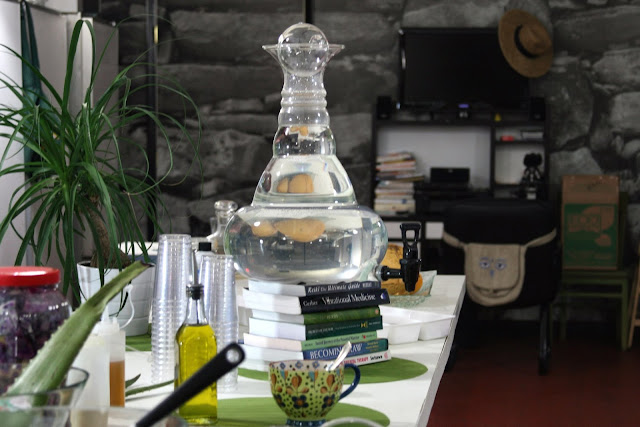Hydrogen: Fuel of Life
Albert Szent-Györgyi, the Nobel Prize-winning biochemist, said that hydrogen, rather than oxygen, is the fuel of life.
Everyone knows we need oxygen to live, but oxygen’s counterpart (hydrogen) is the real fuel.
Oxygen burns hydrogen releasing the energy (in the form of ATP) that runs our bodies.
Water supplies both the fuel (hydrogen) and the fire (oxygen); it is hydrogen that is often the limiting factor.
The word hydrogen comes from the Greek, meaning “water-former.”
Water is formed when hydrogen is burned by oxygen. It is created every day in our bodies as we burn hydrogen to create ATP. Hydrogen and oxygen participate in a continuous cycle that generates both water and energy.
Dr. Szent-Györgyi was the first to show that the human body stores hydrogen in many of its organs.
He referred to this as hydrogen pooling and he identified the organs that pool the greatest amounts of hydrogen.
The liver pools the most hydrogen; it requires hydrogen to neutralize free radicals produced during detoxification.
In 2001, a group of researchers reported that animals maintained in a hydrogen-rich environment were significantly protected from chronic liver injury. Later research demonstrated that inhaled hydrogen gas (~4%) had antioxidant properties that can protect the brain against stroke. U.S. Military documents indicate that hydrogen is an effective means of protection and repair against radiation injury. Many other studies have established the significance of a hydrogen enriched environment.
Chapter 6 of Dancing with Water examines the relationship between hydrogen and oxygen revealing that the absence of hydrogen is the underlying cause of dehydration which has been linked to many maladies. All the symptoms of disease and aging are, in one way or another, accompanied by slow dehydration.
By increasing the amount of hydrogen we get every day and by replenishing our hydrogen pools,
we can relieve many symptoms, and improve our level of energy.
Everyone knows we need oxygen to live, but oxygen’s counterpart (hydrogen) is the real fuel.
Oxygen burns hydrogen releasing the energy (in the form of ATP) that runs our bodies.
The word hydrogen comes from the Greek, meaning “water-former.”
Water is formed when hydrogen is burned by oxygen. It is created every day in our bodies as we burn hydrogen to create ATP. Hydrogen and oxygen participate in a continuous cycle that generates both water and energy.
Dr. Szent-Györgyi was the first to show that the human body stores hydrogen in many of its organs.
He referred to this as hydrogen pooling and he identified the organs that pool the greatest amounts of hydrogen.
The liver pools the most hydrogen; it requires hydrogen to neutralize free radicals produced during detoxification.
In 2001, a group of researchers reported that animals maintained in a hydrogen-rich environment were significantly protected from chronic liver injury. Later research demonstrated that inhaled hydrogen gas (~4%) had antioxidant properties that can protect the brain against stroke. U.S. Military documents indicate that hydrogen is an effective means of protection and repair against radiation injury. Many other studies have established the significance of a hydrogen enriched environment.
Stress, poor diet, and pollution, deplete the pools of hydrogen in our bodies.
In our modern society, most people are hydrogen depleted.
When we think of hydration, we think of water.
But when the body calls for water, it is hydrogen it wants.
Chapter 6 of Dancing with Water examines the relationship between hydrogen and oxygen revealing that the absence of hydrogen is the underlying cause of dehydration which has been linked to many maladies. All the symptoms of disease and aging are, in one way or another, accompanied by slow dehydration.
By increasing the amount of hydrogen we get every day and by replenishing our hydrogen pools,
we can relieve many symptoms, and improve our level of energy.
Food, air, and water are all sources of hydrogen.
There are a number of ways to maximize the hydrogen in food, air, and water:
Food is a primary source of hydrogen.
Carbohydrates contain equal parts of hydrogen, carbon, and oxygen.
However, the hydrogen in food is tied up in complex molecules.
Food must be metabolized (broken down) to release the hydrogen.
Dr. Szent-Györgyi identified the series of reactions that liberate hydrogen from carbohydrates.
He said: The foodstuff, carbohydrate is essentially a packet of hydrogen, a hydrogen supplier and hydrogen donor, and the main event during its combustion is the splitting off of hydrogen. So, although food is a primary source of hydrogen, it requires work for the body to release it.
Cooking burns off a large portion of the hydrogen in food.
"To maximize the available hydrogen from your diet,
eat an abundance of raw food."
The air we breathe also contains hydrogen, but in tiny amounts.
The amount found in the atmosphere is significantly less than 1% and it is measured in parts per billion.
Yet, the hydrogen from the air is immediately available for use by the body.
It is absorbed into cells and tissues the moment it enters the respiratory tract.
One way to enhance the air with hydrogen is to use an air ionizer.
It produces an abundance of negative ions; many of which are hydrogen.
No wonder people feel so good when they breathe ionized air.
Ionized air is also plentiful in the presence of moving water; especially waterfalls, and at the ocean where saltwater continually releases ions into the air.
The last way to increase the amount of hydrogen you get on a regular basis is to enrich your water.
This can be a powerful and plentiful source.
As described in Chapter 6 of Dancing with Water,
hydrogen is held within the tiny cages created as water is structured.
There, it contributes to the stability of water’s structure and to water’s energetic potential.
Nuage Cafe's water is rich in Hydrogen.
For info, visit: http://www.thewaterpower.com/p/finobacci-carafe.html





No comments:
Post a Comment